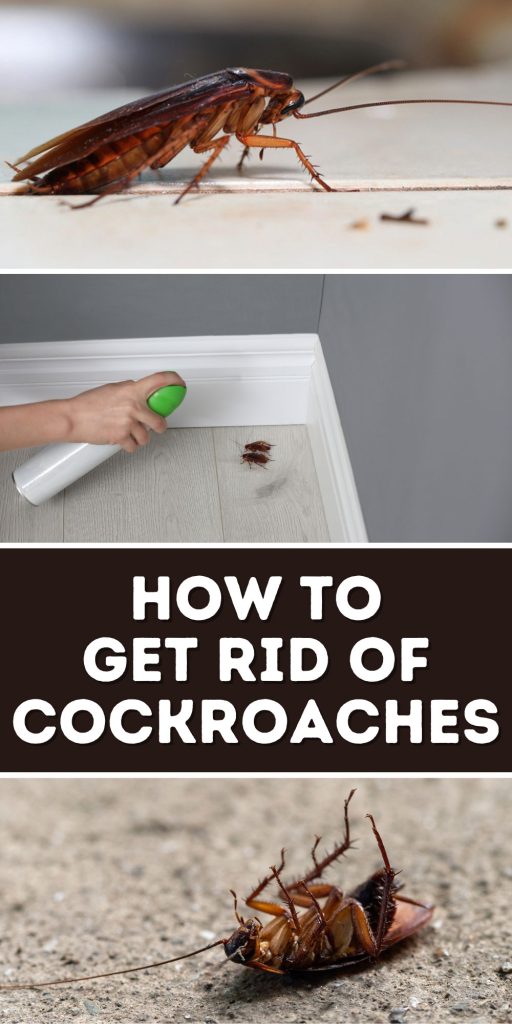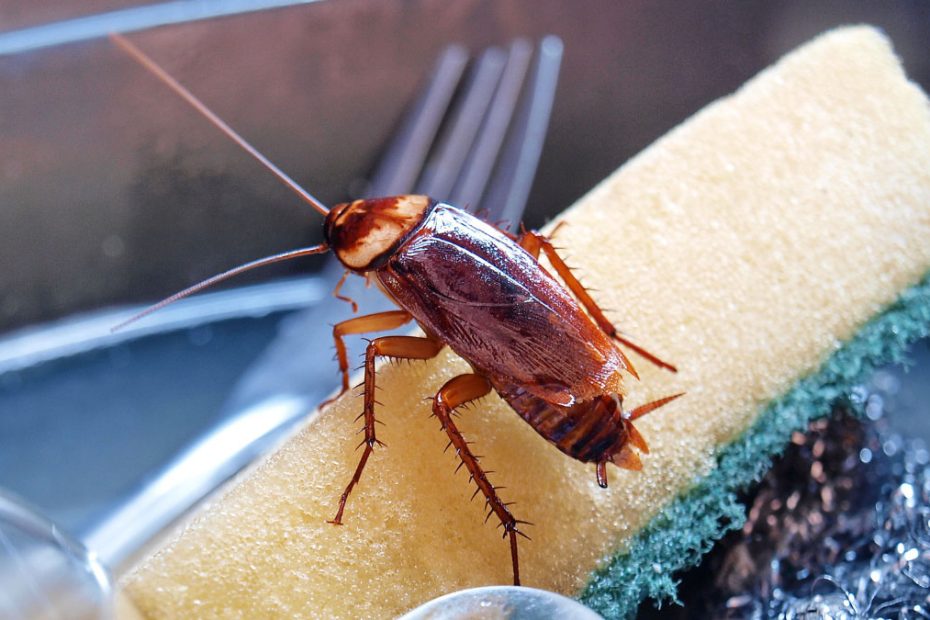Cockroaches are more than just a nuisance; they pose health risks and can quickly turn your home into an uncomfortable space. If you’ve spotted these unwelcome guests scurrying around, you’re probably wondering how to get rid of them for good. Fortunately, with the right strategies, you can reclaim your home and keep it roach-free.
Key Takeaways
- Understanding Cockroaches: Knowing the common species—like German, American, Oriental, and Brown-Banded cockroaches—helps in effectively targeting and controlling infestations. Understanding their habitats and behavior is crucial for effective management.
- Prevention Techniques: Maintain cleanliness, manage trash, store food properly, and seal entry points like cracks, gaps, and vents to prevent cockroach invasions.
- Natural Remedies: Employ essential oils like peppermint and lavender, and homemade traps such as boric acid and sugar mixtures to deter and eliminate cockroaches without chemicals.
- Chemical Solutions: Use insecticide sprays, baits, and traps strategically to tackle severe infestations. These methods involve chemicals to kill cockroaches on contact or through ingestion.
- Professional Pest Control: Seek help from pest control services for large or persistent infestations. Professionals offer specialized tools, customized treatment plans, and thorough monitoring to ensure cockroach elimination.

Understanding Cockroaches
Cockroaches are one of the most common household pests worldwide. Knowing about their species and habitats can help you effectively tackle an infestation.
Common Species of Cockroaches
Different regions encounter different species of cockroaches. Understanding these species can guide your approach to controlling them.
- German Cockroach: Small, brown, and with two dark stripes on their back. Common in kitchens and bathrooms.
- American Cockroach: Large, reddish-brown, and often found in warmer climates. Common in basements, crawl spaces, and sewers.
- Oriental Cockroach: Dark, glossy black or brown. Prefers cooler, damp areas such as basements and drains.
- Brown-Banded Cockroach: Smaller than American cockroaches and known for the two light brown bands across their wings. Often found in higher locations like ceilings and inside furniture.
Habitats and Lifestyles
Cockroaches adapt to various environments but share some common preferences and behaviors.
- Daytime Hiding: Cockroaches are nocturnal. They hide in dark, damp places during the day.
- Food Sources: They consume various materials, including food scraps, garbage, and even book bindings.
- Water Dependence: Although resilient, cockroaches need water to survive. They thrive in moist environments.
- Warmth: They prefer warmer temperatures but can endure cooler climates.
Combating cockroaches begins with understanding their habits and choosing suitable methods to disrupt their life cycles.
Prevention Techniques
Preventing cockroaches from invading your home requires consistent, proactive measures. The following techniques focus on cleanliness, maintenance, and sealing entry points to create a roach-free environment.
Cleanliness and Maintenance
Maintaining a clean environment significantly reduces the likelihood of a cockroach infestation. Consider the following strategies:
- Regular Cleaning: Clean kitchen counters, dining areas, and food storage spaces daily. Use disinfectants to remove food residues.
- Trash Management: Empty trash cans frequently and use bins with tight-fitting lids.
- Food Storage: Store food in airtight containers, including pet food. Keep fruits and vegetables refrigerated.
- Dishwashing: Avoid leaving dirty dishes in the sink overnight. Wash them promptly or use a dishwasher.
- Floor Cleaning: Vacuum and mop floors regularly, focusing on corners and under appliances.
Sealing Entry Points
Cockroaches often enter through small cracks and openings. Seal these entry points to keep them outside:
- Caulking Gaps: Use caulk to seal gaps around windows, doors, and baseboards.
- Fixing Pipes: Repair leaks and drips under sinks, around toilets, and in basements.
- Blocking Vents: Install screens on vents and ensure they are properly sealed.
- Covering Drains: Use drain covers in sinks and bathtubs when not in use.
By following these prevention techniques, you can effectively reduce the risk of cockroach infestations in your home.
Natural Remedies
Natural remedies offer a chemical-free way to get rid of cockroaches. These methods are accessible and can be effective when implemented correctly.
Essential Oils
Essential oils can deter cockroaches effectively:
- Peppermint Oil: Contains menthol, which repels cockroaches. Mix 10-15 drops with water in a spray bottle and apply to infested areas.
- Lavender Oil: Known for its strong aroma, lavender oil can disrupt cockroach activity. Use it similarly to peppermint oil for best results.
- Eucalyptus Oil: Acts as a natural insecticide. It’s best to use 10-15 drops in water for spraying entry points and hideouts.
- Tea Tree Oil: Possesses antibacterial and insecticidal properties. Combine it with water and apply around your home’s crevices.
Homemade Traps
Homemade traps help control cockroach populations without professional intervention:
- Boric Acid and Sugar Trap: Mix equal parts boric acid and sugar. Place the mixture in small containers near infested areas; the sugar attracts them, and the boric acid eliminates them.
- Baking Soda and Sugar Trap: Combine equal parts baking soda and sugar. The sugar lures cockroaches, and the baking soda reacts with their stomach acids, killing them.
- Jar Trap: Fill a jar with water and a few drops of dish soap. Place it where you’ve noticed roach activity; they’ll enter the jar and drown due to the soapy water.
- Duct Tape Trap: Place strips of duct tape sticky side up in areas with high cockroach traffic. The adhesive will capture them, preventing further infestation.
By leveraging these natural remedies, you can effectively manage and reduce cockroach populations in your home.
Chemical Solutions
Using chemical solutions to get rid of cockroaches can be highly effective when natural remedies aren’t enough. Below, you’ll find insights into using insecticide sprays, baits, and traps for combatting these persistent pests.
Insecticide Sprays
Insecticide sprays serve as a direct approach to eliminating cockroaches. These products consist of chemicals that kill these pests on contact or through ingestion. Use insecticide sprays effectively by following these steps:
- Identify Infested Areas: Focus on kitchens, bathrooms, and any damp or warm locations where cockroaches are typically found.
- Choose the Right Product: Opt for sprays specifically designed for cockroach infestations. Look for active ingredients like imiprothrin, cypermethrin, or deltamethrin.
- Follow Safety Precautions: Ensure proper ventilation and follow the manufacturer’s instructions for application to avoid inhalation or skin contact.
- Apply to Cracks and Crevices: Target cracks, crevices, baseboards, and under appliances where cockroaches hide.
- Regular Monitoring: Reapply as necessary while monitoring the treated areas to ensure the cockroach population is decreasing.
Baits and Traps
Baits and traps offer an alternative or complimentary method to sprays, providing a strategic approach to eliminating cockroaches.
Baits
Baits contain insecticides mixed with attractants that lure cockroaches. These traps are beneficial because cockroaches carry the poison back to their nests, affecting the colony. Effective use of baits involves:
- Strategic Placement: Place baits near entry points and in areas where roaches are seen, including kitchen cabinets, under sinks, and behind appliances.
- Active Ingredients: Look for baits containing hydramethylnon, fipronil, or indoxacarb, which are highly effective against cockroaches.
- Regular Replacement: Replace baits every few months, or sooner if they appear depleted or dried out.
Traps
Traps capture cockroaches either through sticky surfaces or mechanical mechanisms. Traps help in both monitoring and reducing the cockroach population. Use traps successfully by:
- Selecting Varieties: Choose between glue traps, electromagnetic traps, or pheromone traps that best fit your needs.
- Monitoring and Maintenance: Regularly check traps to remove dead cockroaches and replace them when full.
- Optimizing Placement: Position traps along walls, behind furniture, and in cabinets where cockroaches travel.
By utilizing insecticide sprays, baits, and traps, you can take a comprehensive chemical approach to managing and eliminating cockroach infestations effectively.
Professional Pest Control
When infestations are severe or DIY methods fail, professional pest control offers solutions tailored to effectively eliminate cockroaches.
When to Call a Professional
Consider contacting a pest control service if:
- Infestation Size: Infestations persist or spread, even though multiple DIY attempts.
- Health Risks: Household members experience health issues related to cockroach presence—such as asthma, allergies, or food contamination.
- Structural Damage: Noticeable damage to furniture and structures affects your property’s integrity.
- Time Constraints: Lacking the time or resources to continuously carry out and monitor DIY methods.
What to Expect from a Pest Control Service
Professional pest control services use specialized tools and techniques to ensure thorough elimination:
- Inspection: Experts identify infestation sources, cockroach species, and assessment of damage levels in a detailed inspection.
- Customized Treatment Plan: Develop a tailored plan that includes a mix of chemical treatments, traps, and preventive measures suited to your specific infestation.
- Chemical Treatments: Use of professional-grade insecticides, which may involve gel baits, sprays, and dust applications in the appropriate areas.
- Monitoring and Maintenance: Regular follow-ups to monitor the infestation and ensure that preventive measures are effective.
Definition List for Key Terms:
- Infestation: A large number of insects or animals in a place and causing damage or disease.
- Chemical Treatments: Use of substances designed to kill, repel, or control pest populations.
Hiring professional pest control can save you time and ensure a cockroach-free environment.
Conclusion
Getting rid of cockroaches is crucial for maintaining a healthy and comfortable home. By understanding their behaviors and habitats, you can carry out effective strategies to keep them at bay. Regular cleaning, proper food storage, and sealing entry points are essential preventative measures.
Natural remedies like essential oils and homemade traps offer chemical-free options for managing cockroach populations. For more persistent infestations, chemical solutions such as insecticide sprays, baits, and traps can be highly effective.
If DIY methods don’t work, professional pest control services provide thorough inspections and customized treatment plans. With these combined approaches, you can achieve a roach-free environment and peace of mind.
Frequently Asked Questions
What are the health risks associated with cockroaches?
Cockroaches can spread harmful bacteria and pathogens, causing food poisoning, allergies, and asthma. Their presence can also trigger respiratory issues due to allergens found in their droppings and shed skins.
What are some common species of cockroaches found in homes?
The most common species include German, American, Oriental, and Brown-Banded cockroaches. Each species has unique characteristics and habitat preferences, but they generally thrive in warm, damp environments.
How can I prevent cockroach infestations in my home?
Maintain cleanliness, manage trash properly, store food in airtight containers, wash dishes promptly, seal entry points, fix leaks, block vents, and use drain covers to reduce the risk of infestations.
Are there natural remedies to control cockroach populations?
Yes, essential oils like peppermint, lavender, eucalyptus, and tea tree oil can repel cockroaches. Homemade traps using boric acid, sugar, baking soda, and duct tape are also effective non-chemical solutions.
What chemical solutions are effective for cockroach infestations?
Insecticide sprays, baits, and traps can be effective. Sprays eliminate on contact, baits poison cockroaches gradually, and traps monitor and reduce populations. Always follow safety guidelines when using chemicals.
When should I consider professional pest control services?
Consider professional help for persistent infestations, health risks, structural damage, or if DIY methods fail. Pest control services offer thorough inspections, customized treatment plans, and ongoing monitoring.
How can I identify a cockroach infestation?
Signs include droppings, shed skins, egg cases, a musky odor, and sightings of live roaches, especially at night. Infestations may also be indicated by damage to food and property.
What should I expect from a professional pest control service?
Expect a thorough inspection, customized treatment plan, use of professional-grade chemicals, and continuous monitoring. They provide an efficient and comprehensive approach to eliminating infestations.
